The Land Of China -- Explore by Province
Sichuan
Sichuan (Four Rivers) is a rich and beautiful place and is known as the "Land of Abundance". It is called Chuan or Shu for short and is located on the upper reaches of the Yangtze River. With an area of 570,000 square kilometers, Sichuan is the biggest province in China (not including the autonomous regions) and is the province with the largest population.
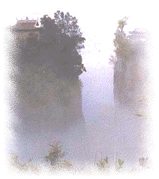 Du Chuan, Sichuan
Du Chuan, Sichuan
|
Geographically, the province consists of the Western Sichuan Plateau, which has an average altitude of over 3,000 meters, and the Sichuan Basin. At the bottom of the Basin is the Chengdu Plain. In the Basin, the famous Dujiangyan Irrigation System irrigates more than 600,000 hectares of farmland, making it fertile and rich with crops all the year round.
Sichuan has a variety of physical features. In the west is Mount Gongga, the highest peak in the province that rises 7,556 meters above sea level; in contrast, the surface of the Yangtze River in the east has only an altitude of less than 100 meters. The land gradually slopes downward from the northwest to the southeast. The natural formations in Sichuan not only provide many spectacular sights for tourists, but also creates different kinds of ecological environments for plants and animals. In the thirteen natural preserves, lovely giant pandas live on arrow bamboo, and metasequoia is now attracting more and more visitors with its unique postures.
There are altogether 1,300 rivers in the province. Among them, only the Hei He, the Bai He, and the Jisqu Rivers flow into the Huang He. The rest all join the Yangtze. Of them, the major ones are the Jialing, Tuojiang, Minjiang, Dadu, and Yalong rivers. Of all the rivers, some are favourable for navigation, others are good for irrigation, and still others, raging and torrential, provide rich waterpower resources.
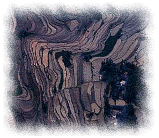 Terraced Fields in Sichuan
Terraced Fields in Sichuan
|
Sichuan also has a variety of climates. The Sichuan Basin has a temperate climate with warm winters, hot summers, early springs, and long frost periods. But on the southwestern plateau, high mountains along with deep valleys form a variety of climates, covering South Asian tropical to frigid zones.
Sichuan has more than 80 million hectares of lush forests with a wood storage next to only the Heilongjiang Province in northeast China. In the snow capped high mountains grow the Chinese caterpillar fungus, the bulb of fritillary, the snow lotus, and other precious medicinal herbs. In the lowlands of the deep valleys you can find blooming silk cotton and fruit trees heavy with banana, lychee, and longan. One can also enjoy the natural landscape of thatched cottages with cactus fenses. In the southern part of Sichuan, green and luxuriant bamboo covering the undulating hills like an immense ocean can be seen, while in the Chengdu Plain, one can find bamboo planted in clusters around thatched cottages.
 Chongqing
Chongqing
|
Sichuan is a province of multi-nationalities. In it there live fifteen nationalities in all: the Qiang, Yi, Miso, Hui, Mongolian, Zang (Tibetan), Tujia, Bouyei, Lisu, Naxi, Bai, Manchu, Zhuang, and Dai. Though each has its own history, culture, and customs, they live in peace and harmony with each other. The Qiangs have a long history and now live only in Sichuan. They have the custom of drinking wine together. Before the actual drinking begins, they will sing songs in honor of their own national heroes or in praise of the unique bond between the Qiangs and the Hans.
 Chengdu
Chengdu
|
Capital city Chengdu was an ancient capital during the Period of Three Kingdoms. It has a history of over 2000 years. Du Fu's Thatched Roof Cottage is a park built in the memory of the famous Tang poet, Du Fu, where he wrote over 240 poems. The Temple of Marquis Wu was built in the 6th century for Zhu Geliang, a respected strategist and statesman. The River-Viewing Pavilion is a park with over 100 varieties of bamboo, where a Tang dynasty woman poet lived. The city zoo has over 10 giant pandas, rare, golden-haired monkeys, and 200 other varieties.
The scenery of Sichuan has a unique style, for Mount Emei has been regarded as the "Beauty under Heaven," Mount Qingcheng as the most tranquil and serene spot in the world, Jianmen Pass as the most perilous path, and the Yangtze Gorges as the most magnificent view. In addition to these scenic spots, there are other fascinating wonders of nature.
90 kilometers from Chengdu is Green City Mountain, a Taoist center. Another 700 to 800 kilometers is Jiuzhaigou, a 60,000-hectare primitive forest with many wild, exotic animals such as wild pigs, bears, and snakes. Throughout the forest are carpets of flowers, lakes, and waterfalls. 150 kilometers from Chengdu is the Lying Dragon Nature Preserve that contains many wild pandas. 240 kilometers southeast of Chengdu is Zigong and its Dinosaur Museum.
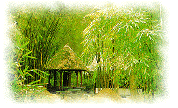 the Thatched Cottage of Du Fu
the Thatched Cottage of Du Fu
|
The Thatched Cottage of Du Fu lies at the side of the Flower Washing Brook in the western suburbs of Chengdu (712-770). With an area of 44 hectares, it was the former residence of the famous Tang Dynasty poet. At the age of 47 (759), compelled by poverty and social upheaval,
he moved from Gansu to the outskirts of Chengdu where he built the thatched hut to settle down. During his stay of nearly four years, he composed more than 240 poems reflecting upon the misery of the people and his enlightened views about this. The original residence disappeared long ago. It was renovated in the Ming and Qing dynasties and enlarged to its present scale. Within the building from front to back are the poetic history halls, thatched entrance, Gongbuci Temple, Shaoling Stone Monument and others.
 the Marquis Wu Shrine
the Marquis Wu Shrine
|
With an area of 3.7 hectares, The Marquis Wu Shrine is situated in the southern suburbs of Chengdu. It was built by Li Xiong (304-334) of the Western Jin Dynasty (265-316) in memory of Zhuge Liang, prime minister of Shu Kingdom of
the Three Kingdom Period. During the early Ming Dynasty (1368-1644), it was merged into one with the Temple of Liu Bei, the Marquis emperor. But the name of the shrine has remained the same until this day. It was renovated during the reign of Qing Emperor Kangxi in 1672. Now, within the building group are: the first entrance, second entrance, Liu Bei Hall, the lobby, Zhuge Liang Hall and others. In the shrine are 47 historic figures of the Shu Kingdom, 40 steles and stone tablets, more than 30 plaques and dozens of ancient tripods, insence burners, bells, drums and other relics.
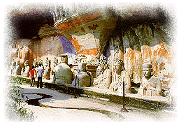 the Carvings of Dazu County
the Carvings of Dazu County
|
In Dazu County of eastern Sichuan Province, there are more than 50,000 stone sculptures scattered in 40 places. The largest, richest and most exquisite collection of statues is situated at the foot of the Baoding and North Hill. They are
representative stone sculptures of the Tang (628-907) and Song (960-1279) Dynasties. The stone carvings along the Baoding Hill were hewn out from 1174 to 1249 under the Southern Song Dynasty. The row is 500 meters long and consists of nearly ten thousand statues. The most distinctive and majestic are the "Thousand-arm Goddess of Mercy" and the 31 meter-long Sleeping Buddha. They are unparalled works of art. The sculptures located on the North Hill were begun in 892 and continued over the next 300 years. Altogether, there are 264 shrines and 7,000 statues covering a distance of 500 meters.
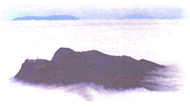 Mount Emei
Mount Emei
|
Mount Emei covers an are of more than 300 square km and is situated in the southwest region of Emei County. Mount Emei is the general name for three mountains, Da'e (Great E), Er'e(Second E) and San'e(Third E). It is one of the four famous Buddhist mountains in China with undulating peaks covered with lush forests and green bamboos. Majestic, quiet and secluded, it has been acclaimed as a 'Beauty under Heaven'.
Most of the monasteries and temples on Mount Emei were built during the Eastern Han Dynasty (AD25-220) while others were added later. As a well-known Buddhist sanctury of Samantabhadra, it has more than 100 monasteries and temples that were built during the Ming and Qing dynasties (1368-1911). Its main monasteries and scenic areas include : Baoguo Monastery, Wannian Monastery, Fuhu (Ambushing Tiger) Monastery, Leiyin (Thunder Sound) Monastery, Chunyang Hall, Qingyin (Pure Tone) Tower, Heilongjiang Plank Road, Hongchun Ping, Xianfeng (Fairy Peak) Monastery, Xixiang (Wash Elephant) Pool, the Golden Summit, Huayan Top, and the White Dragon Cave.
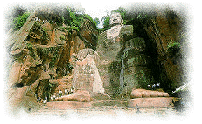 the Giant Buddha of Leshan
the Giant Buddha of Leshan
|
The Giant Buddha of Leshan is carved in to a cliff overlooking the intersection of the Minjiang River, Qingyi River and the Dadu River. As the old saying goes: "The mountain is a Buddha, the Buddha is a mountain, ". being the largest stone Buddha in the world. Carving started in 713 during the Tang Dynasty and lasted until its completion in 803. It is 71 meters tall, 28 meters wide at the shoulders, 14.7 meters high for the head, 7 meters long for its ears with its nose being 5.6 meters long!
Jiuzhaigou ecompasses an area of about 620 square km and lying in Nanping County which is located in the northern part of the province of Sichuan.
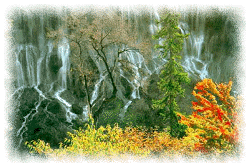 Jiuzhaigou
Jiuzhaigou
|
It is a deep valley more than 40 km long in which there are nine Tibetan villages. Secluded, it has a variety of natural sceneries including lakes, waterfalls, snowy mountains and beautiful green forests. In the valley, there are one hundred lakes of various sizes and shapes. In Wuhua Hai (Five Flower Sea), waters appear in five colours presenting a marvelous wonder of nature. The one-hundred-meter wide Nuorilang Waterfall's 30-meter drop is a spectacular view. The waters here are crystal clear and occasionally one can see birds swim in the lake while fish fly in the blue sky. Primitive, simple and uninhabited, it is a wonderful fairyland of nature.
If you are keen on the beauty of nature with primitive taste, Huanglong is the ideal place to go. There you can see a variety of mountain structures, lush woods, colourful flowers, and crystal waters, just like scrolls of classical paintings.
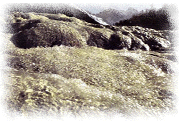 Crystal Waters of Huang Long
Crystal Waters of Huang Long
|
Huanglong, or the Yellow Dragon Temple Scenic Area, is situated in the Yellow Dragon Village north of Songpan County after being built in the Ming Dynasty (1368-1644). Originally the building consisted of three temples, the front temple, the middle temple and the rear temple. But only the rear temple still stands. The scenic area is 7.5 kilometers long by one kilometer wide. Its unique, fantastic and charming natural sceneries are known at home and abroad. This soft green slope is 3,000 meters above the sea level and is covered with climbing figs, luxuriant forests and thousands of lakes with colourful and dazzling waters. A 4,645-meter-long, 1.2-meter-wide plank road runs from the entrance of the gully to the back of the temple. At the gully entrance, Fujiang River gushes from the Danyun Gorge like a galloping horse, forming a multitude of waterfalls.
If you like to climb mountains, Mount Gongga and the Siguniang Mountains are waiting for you. Here, the peaks are a panorama of ice and snow with sunshine all-year round. There are also landslides and glaciers with biting cold weather.
Those who are fond of sites with historic relics may take the Jianmen Path. There, visitors can find holes of plank road built along sheer precipices and overhanging rocks as well as the narrow and winding Cuiyunlang, through which the Song Dynasty poet Lu You once travelled. In Gongxian County, visitors will find hanging coffins of the Bo nationality in caves of overhanging cliffs. Why and how did they put their coffins in the cliffsides hundreds and thousands of years ago? It may interest you to find a clue to this mystery.
Another spectacular view is the Daning River, a tributary of the Yangtze River. It meanders between sheer cliffs and steep mountains. Travelling in a boat, you will be delighted amid fear.



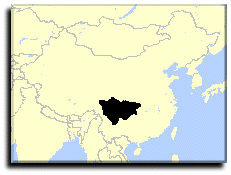















 Chinese Culture
Chinese Culture